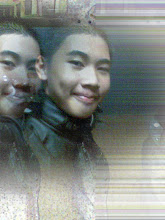With IT playing an increasingly important role in the lives of pupils, a survey by Epson has shown that that the number one technology teachers want in the classroom are computers, including laptops, desktops and tablets. In the poll of 100 UK secondary school teachers, the top five products in their technology wish list were: Computer, laptops and tablets (70%); interactive whiteboards (50%); interactive projectors (34%); classroom/school management software (30%) and digital teaching content (29%).
While the research indicates that teachers favour interactive technology that can help students actively engage with the lesson content, the ICT investment decisions of many schools aren’t supporting this.
While the research indicates that teachers favour interactive technology that can help students actively engage with the lesson content, the ICT investment decisions of many schools aren’t supporting this.
Over the past twelve months, only five per cent of schools surveyed had invested in interactive projectors, 10% had bought computers, and 17% had invested in interactive whiteboards. For teachers wanting to take advantage of the opportunities that interactive technology offers, the survey indicates that the next twelve months won’t deliver the investment that they are looking for.
Although 35% of ICT buyers for schools surveyed were looking to invest in interactive projectors, none questioned were planning on buying computers or interactive whiteboards.
However, the survey also indicates the pressures that ICT resources in schools are under. 50 per cent of teachers surveyed agreed that their school needs to undergo a significant ICT refresh in order to enhance the learning experience for their pupils. However, the average ICT budget for secondary schools in 2011 was £20,500, the result of cuts of 2.7% across secondary school IT budgets in 2011. Despite this, 64% of ICT buyers in schools expect their budgets to increase slightly during 2012, with 26% not expecting any change.
“ICT has moved on so quickly over the past decade that it can be difficult for schools to keep up,” says Sarah Moore, history teacher, Cheam High School. “Rather than being a luxury, interactive ICT equipment is now a vital tool for improving engagement between teachers and pupils. Although those buying ICT for schools are working with limited budgets, they recognise the difference that the right technology can make to pupils.”
“One of the most revealing things about our research is the disparity between the technology that teachers want to see in the classroom and the investment priorities of those responsible for buying ICT,” says Graeme Davidson, Category Manager, Epson. “It’s no surprise that teachers want to use technology that allows pupils to be much more involved in the lesson. Rather than static images and books, computers and interactive projectors allow education to come to life and dramatically improve the learning experience.”




